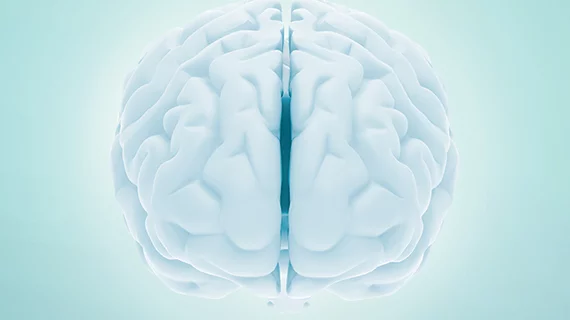Brain imaging links hypertension to dementia
Individuals with high blood pressure are at an increased risk for developing dementia, according to an imaging study funded by the Italian government.
This is the first time research has linked the two conditions, co-author Giuseppe Lembo, MD, PhD, and colleagues wrote in Cardiovascular Research—but it doesn’t come as a complete surprise. Hypertension is a chronic condition that causes progressive organ damage, they said, so any long-term exposure to vascular risk factors feeds that.
What was a first was the discovery that MR imaging can be used to detect early signs of neurological damage in hypertensive patients ahead of dementia itself.
“The problem is that neurological alterations related to hypertension are usually diagnosed only when the cognitive deficit becomes evident, or when traditional magnetic resonance shows clear signs of brain damage,” Lembo, of the Department of Molecular Medicine at Sapienza University of Rome, said in a release from Oxford University Press. “In both cases, it is often too late to stop the pathological process.”
Lembo and colleagues screened men and women—none of whom had pre-diagnosed dementia or structural brain damage—admitted to the Regional Excellence Hypertension Center of the Italian Society of Hypertension for their work. All participants underwent both clinical examination to determine blood pressure and a 3T MRI to detect micro-damages to the brain, with particular emphasis on white matter fiber-tracts.
The researchers found that hypertensive individuals tended to have great alterations in three white matter fiber-tracts, and they also scored worse in cognitive domains ascribable to brain regions connected through those fiber-tracts, meaning they saw poorer performances in executive functions, speed processing and memory.
“We have been able to see that, in the hypertensive subjects, there was a deterioration of white matter fibers connecting brain areas typically involved in attention, emotions and memory,” co-author and IT engineer Lorenzo Carnevale said in the release. “An important aspect to consider is that all the patients studied did not show clinical signs of dementia and, in conventional neuroimaging, they showed no signs of cerebral damage.”
In other words, Carnevale said, white matter fiber-tracking on MRI was able to detect early signs of cognitive decline in hypertensive patients, which previous methods couldn’t achieve. The information could be key to thousands of cases, he said, in which patients like these could be targeted for preventive therapies before dementia manifests.
“Of course further studies will be necessary, but we think that the use of tractography will lead to the early identification of people at risk of dementia, allowing timely therapeutic interventions,” Carenvale said.

